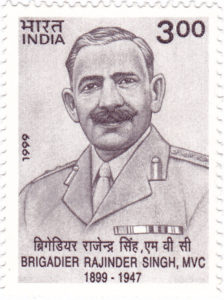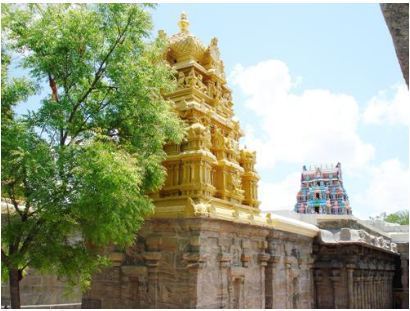
The date, 26 October, does not stir anything significant in the minds and hearts of the majority of this country. It is not a special birthday or a religious holiday that is etched in the conscience of India. On this day in 1947, Maharaja Hari Singh of Jammu and Kashmir signed the Instrument of Accession to India as the region was under siege from Pakistani forces.
The story that many won’t find through a Google search, however, is that of Brigadier Rajinder Singh and his band of warriors who died defending the Kashmir valley. He was martyred the same day Maharaja Hari Singh signed that historic document uniting Jammu and Kashmir with India, a sacrifice that honoured the simple words of that contract. On 30 December 1949, he became independent India’s first recipient of the Maha Vir Chakra, when he was awarded the honour posthumously by the then Army Chief Field Marshall K M Cariappa. The Maha Vir Chakra (literally great warrior medal) is the second highest military decoration in India, after the Param Vir Chakra, and is awarded for acts of conspicuous gallantry in the presence of the enemy, whether on land, at sea or in the air. Yet this warrior is barely known to the nation he served, let alone outside the Jammu region.
Born on June 14, 1899, Rajinder Singh hailed from the Duggar or the Dogra people of Jammu, a community deeply entrenched in the armed forces of India for several generations. Rajinder Singh graduated from the Prince of Wales College, now the GGM Science College, Jammu. He was commissioned as Second Lieutenant in the J&K State Forces on Jun 14, 1921. A remarkable officer of indomitable spirit, he was appointed as the Chief of Army Staff of the J&K State Forces on September 25, 1947, replacing Major General H.L. Scott.
On 21 October 1947, Pakistani forces besieged Jammu and Kashmir after Maharaja Hari Singh declared independence. They tried to take control of the region by force, hoping that the dominant Muslim community would support them. They entered Kashmir via Baramulla and targeted the Sikh and Kashmiri pandits, committing rape, murder and arson in a bid to ‘purge’ the land.
Under siege, on 22 October 1947, Maharaja Hari Singh ordered Brigadier Singh, who served as the chief of army staff of Jammu and Kashmir, to defend the state “till the last man and the last bullet”. The Brigadier just saluted and walked away. He gathered 110 soldiers and moved to Muzaffarabad to counter the invading force of over 6,000 militiamen. He used guerrilla tactics to delay their advance, blowing up the Uri bridge and stalling them in Mahura and Rampur, inflicting heavy casualties. For four days, Brigadier Singh and his brave jawans hindered the progress of the Pakistani invaders. This may have been the first time in contemporary military history where an army chief personally led soldiers in combat.
As Brigadier Singh and his men fought, on 26 October, Maharaja Hari Singh signed the Instrument of Accession joining the Union of India. The Indian military rushed in to back Brigadier Singh; however, just hours away from his position, he was ambushed at Buniyar and fatally wounded and died. He had held fort and repelled the invaders long enough for the Indian Army to push them back, saving thousands from a brutal onslaught. He carried out his orders to the letter, setting an unparalleled example of courage and patriotism.
“If Brig Rajinder Singh had not stopped the Pakistani invaders, if he didn’t sacrifice his life, Kashmir may not have been a part of India,” says Dr Karan Singh.

